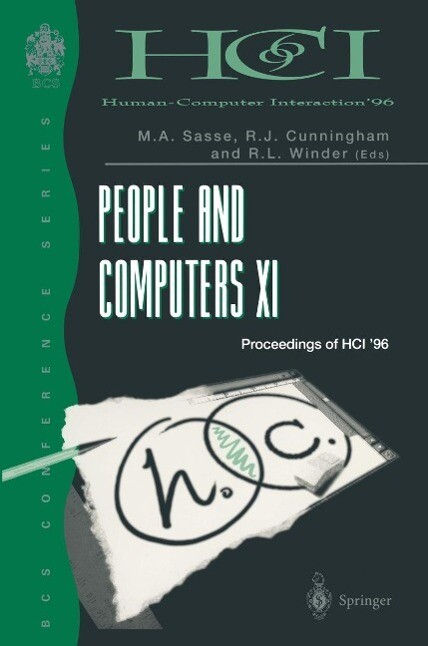
Sofort lieferbar (Download)
Disciplines, including Human-Computer Interaction (HCI), consist of knowledge supporting practices which solve general problems (Long & Dowell, 1989). A disci pline thus requires knowledge to be acquired which can be applied by practitioners to solve problems within the scope of the discipline. In the case of HCI, such knowledge is being acquired through research and, less formally, through the description of successful system development practice. Some have argued that knowledge is further embodied in the artefacts. HCI knowledge is applied to solve user interface design problems. Such applica tion is facilitated if the knowledge is expressed in a conception which makes explicit the design problems of practitioners. A conception has been proposed by Dowell & Long (1989). The conception provides a framework within which to reason about the implications of designs for system performance. The framework is concordant with the trend towards design, discernible in recent HCI research. It is further compatible with notions of top-down design, fundamental to software engineering practice. 2 Teaching and the HeI Research and Development Gap 2.1 An Assessment of Current HCI Education Teaching is one means by which practitioners learn to specify discipline problems. It is also a means by which they acquire knowledge to enable the problems to be solved.
Inhaltsverzeichnis
Fundamental Design Issues.- Towards the Total Quality Interface Applying Taguchi TQM Techniques within the LUCID Method.- Games as a Metaphor for Interactive Systems.- Cultural Bases of Interface Acceptance: Foundations.- A Unified Concept of Style and its Place in User Interface Design.- Developing University Courses to Enable Students to Specify and Solve Human Computer Interaction Design Problems.- 3D or not 3D: Is it Nobler in the Mind?.- Specific Design Issues.- Can Design Choices for Language-Based Editors be Analysed with Keystroke-Level Models?.- Deriving Information Requirement in the Design of a Mathematics Workstation or Visually Impaired Students.- Second-Language Help for Windows Applications.- Extending GUIs.- Eye-based Control of Standard GUI Software.- Non-visual Interaction with GUI Objects.- Earcons as a Method of Providing Navigational Cues in a Menu Hierarchy.- User Involvement.- Problems for User Involvement: A Human and Organizational Perspective.- Multidisciplinary Modelling for User-Centred System Design: An Air-traffic Control Case Study.- Costs and Benefits of User Involvement in Design: Practitioners Views.- What You Don t Know Can Hurt You: Privacy in Collaborative Computing.- Computer-Supported Cooperative Work.- Behavioural Patterns of Collaborative Writing with Hypertext A State Transition Approach.- Workspace Awareness in Real-Time Distributed Groupware: Framework, Widgets, and Evaluation.- Using Distortion-Oriented Displays to Support Workspace Awareness.- Working by Walking Around Requirements of Flexible Interaction Management in Video-supported Collaborative Work.- Multimedia.- Matching Media to Goals: An Approach Based on Expressiveness.- DAVID: A Multimedia Tool for Accident Investigation.- A Web StoryBase.-Session Length and Subjective Satisfaction in Information Kiosk Research.- Author Index.- Keyword Index.
Produktdetails
Erscheinungsdatum
17. April 2013
Sprache
englisch
Auflage
1996
Seitenanzahl
398
Dateigröße
43,09 MB
Herausgegeben von
Jim Cunningham, Angela Sasse, Russel Winder
Verlag/Hersteller
Kopierschutz
mit Wasserzeichen versehen
Produktart
EBOOK
Dateiformat
PDF
ISBN
9781447135883
Entdecken Sie mehr
Bewertungen
0 Bewertungen
Es wurden noch keine Bewertungen abgegeben. Schreiben Sie die erste Bewertung zu "People and Computers XI" und helfen Sie damit anderen bei der Kaufentscheidung.










